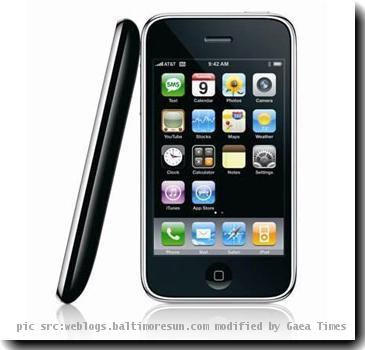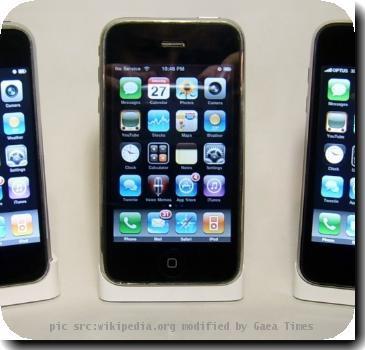There’s a cap for that: AT&T will limit data consumption for new smart phone users
By Peter Svensson, APWednesday, June 2, 2010
For new AT&T users, no more ‘all you can eat’ data
NEW YORK — Just in time for the release of a new iPhone, AT&T will stop letting new customers sign up for its unlimited Internet data plan for smart phones and iPads and charge more for users who hog the most bandwidth.
AT&T hopes to ease congestion on its network, which has drawn complaints, particularly in big cities. But the approach could confuse customers unfamiliar with how much data it takes to watch a YouTube video or fire up a favorite app.
Current subscribers will be able to keep their $30-per-month unlimited plans, even if they renew their contracts. But starting Monday, new customers will have to choose one of two new data plans for all smart phones, including iPhones and BlackBerrys.
Subscribers who use little data — like those who may get dozens of e-mails a day but don’t watch much video — will pay slightly less every month than they do now, while heavy users will be dinged with higher bills.
The move takes effect in time for the expected unveiling of Apple’s new iPhone next week. Analysts said they expect other phone companies to follow. With no caps on consumption, data use could swamp wireless networks while revenue for the operators remains flat.
Verizon Wireless, the largest wireless carrier and AT&T’s chief rival, had no immediate comment on AT&T’s move. There has been much speculation about Verizon getting to sell its own version of the iPhone, but that prospect still appears distant.
One of the new AT&T plans will cost $25 per month and offer two gigabytes of data per month, which AT&T says will be enough for 98 percent of its smart phone customers. Additional gigabytes will cost $10 each.
A second plan will cost $15 per month for 200 megabytes of data, which AT&T says is enough for 65 percent of its smart phone customers. If they go over, they’ll pay another $15 for 200 more megabytes.
A gigabyte is enough for hundreds of e-mails and Web pages, but it’s quickly eaten up by Internet video and videoconferencing. The 200 megabytes offered under the $15 plan is enough for more than 1,000 e-mails, hundreds of Web pages and about 20 minutes of streaming video, AT&T says.
With the smaller plan and voice service, a smart phone could cost as little as $55 per month before taxes and add-on fees, down from $70 now. Ralph de la Vega, head of AT&T’s consumer business, said smart phones would become accessible to more people.
“Customers are getting a good deal, and if they can understand their usage, they can save some money,” de la Vega said in an interview.
Figuring out which plan to choose may not be easy, because many people have only a hazy notion of the size of a gigabyte and how many they use now. By contrast, a minute spent talking on the phone is easy to understand, and many people have learned roughly how many minutes they use every month.
The limits will apply only on AT&T’s cellular networks. Data usage over Wi-Fi networks, including AT&T’s public Wi-Fi “hot spots,” will not count toward the limits.
De la Vega noted that AT&T lets customers track their usage online. The iPhone also has a built-in usage tracking tool. And the carrier will also text subscribers to let them know they’re getting close to their limits.
Jason Prance, an iPhone 3G user in Atlanta, said his first reaction to the end of unlimited usage was to be “ticked off.”
“If you’re taking the ability to go unlimited away from people, you immediately get defensive,” he said.
But then he checked his data consumption on his iPhone for the first time and found he had never used more than 200 megabytes in a month. That surprised him, he said, because he sends and receives a lot of e-mail and watches online video now and then.
Now he figures he can save $30 per month by switching himself and his wife to the $15 plan.
For the iPad, the tablet computer Apple released a few months ago, the new $25-per-month plan will replace the $30 unlimited plan. IPad owners can keep the old unlimited plan as long as they keep paying $30 per month, AT&T said.
AT&T, based in Dallas, said the new plans shouldn’t materially affect its profits this year. Its stock rose 34 cents, or 1.3 percent, to $24.67 in Wednesday afternoon trading.
Customers have rebelled against the idea of data usage caps on broadband Internet at home, at least when limits are set low enough to make online video expensive. Time Warner Cable Inc. was forced to back away from trials of data caps last year after protests and threats of legislative action.
On wireless networks, where there’s less data capacity to go around, usage caps have been more common. Most wireless carriers, for instance, limit data cards for laptops to 5 gigabytes per month.
With competition for smart phone users intense, phone companies have been reluctant to impose data caps on those devices, although Sprint Nextel Corp. reserves the right to slow down or disconnect users who exceed 5 gigabytes per month.
Carriers have also started to lift limits on other use, selling plans with unlimited calling and text messaging. That’s not a big gamble because not many people have the time to talk on the phone for eight hours a day or spend every waking minute sending text messages. Smart phones, on the other hand, can draw a lot of data, depending on where and how they’re used.
Online:
AT&T’s data calculator, for consumption estimates:
www.att.com/standalone/data-calculator/index.html
Tags: Communication Technology, Computer Hardware, Computing And Information Technology, Consumer Electronics, data plans, Mobile Communications, New York, North America, Online Media, United States, Wireless Networking, Wireless Technology, Youtube

